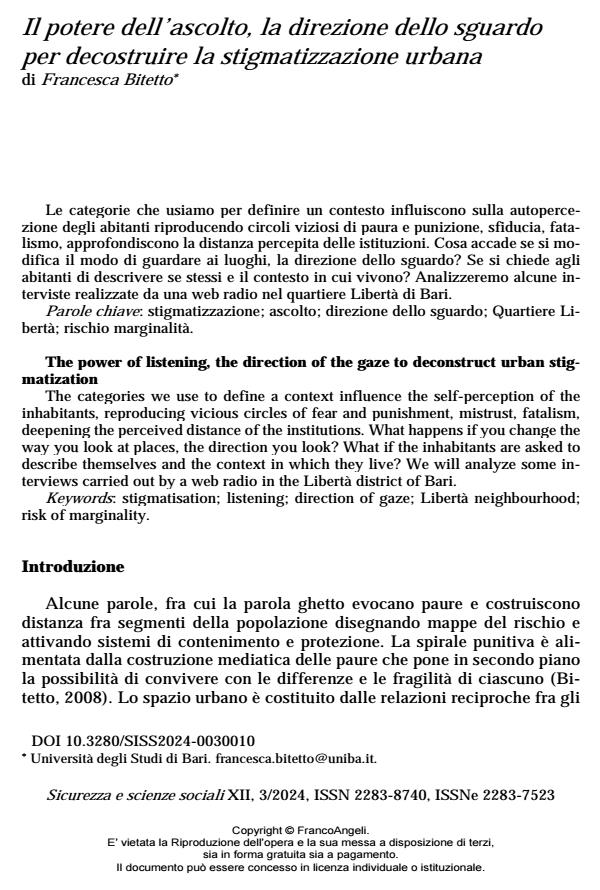The power of listening, the direction of the gaze to deconstruct urban stigmatization
Journal title SICUREZZA E SCIENZE SOCIALI
Author/s Francesca Bitetto
Publishing Year 2024 Issue 2024/3
Language Italian Pages 16 P. 116-131 File size 109 KB
DOI 10.3280/SISS2024-003010
DOI is like a bar code for intellectual property: to have more infomation
click here
Below, you can see the article first page
If you want to buy this article in PDF format, you can do it, following the instructions to buy download credits

FrancoAngeli is member of Publishers International Linking Association, Inc (PILA), a not-for-profit association which run the CrossRef service enabling links to and from online scholarly content.
The categories we use to define a context influence the selfperception of the inhabitants, reproducing vicious circles of fear and punishment, mistrust, fatalism, deepening the perceived distance of the institutions. What happens if you change the way you look at places, the direction you look? What if the inhabitants are asked to describe themselves and the context in which they live? We will analyze some interviews carried out by a web radio in the Libertà district of Bari.
Keywords: stigmatisation; listening; direction of gaze; Libertà neighbourhood; risk of marginality.
Francesca Bitetto, Il potere dell’ascolto, la direzione dello sguardo per decostruire la stigmatizzazione urbana in "SICUREZZA E SCIENZE SOCIALI" 3/2024, pp 116-131, DOI: 10.3280/SISS2024-003010